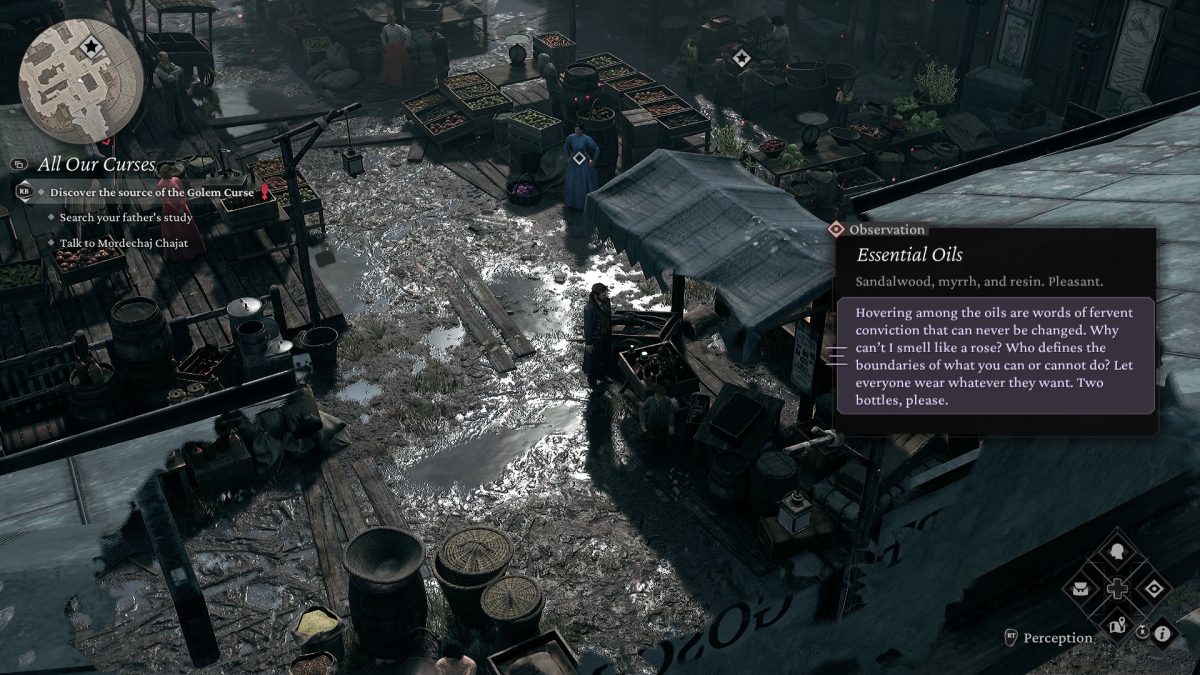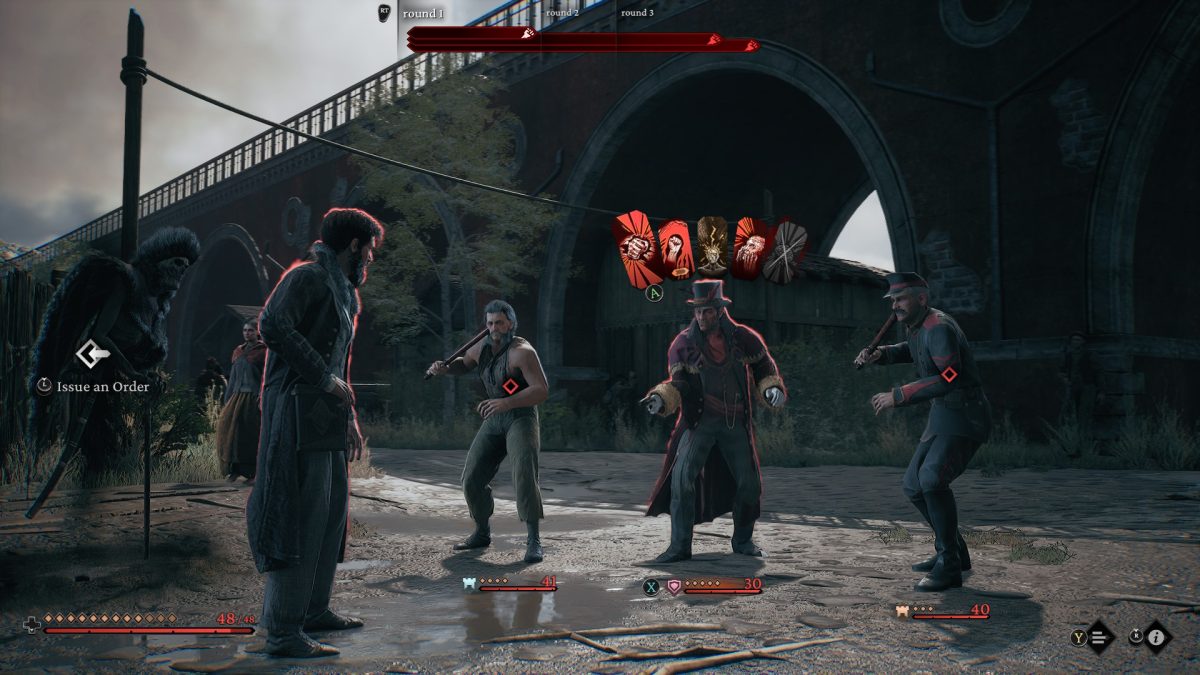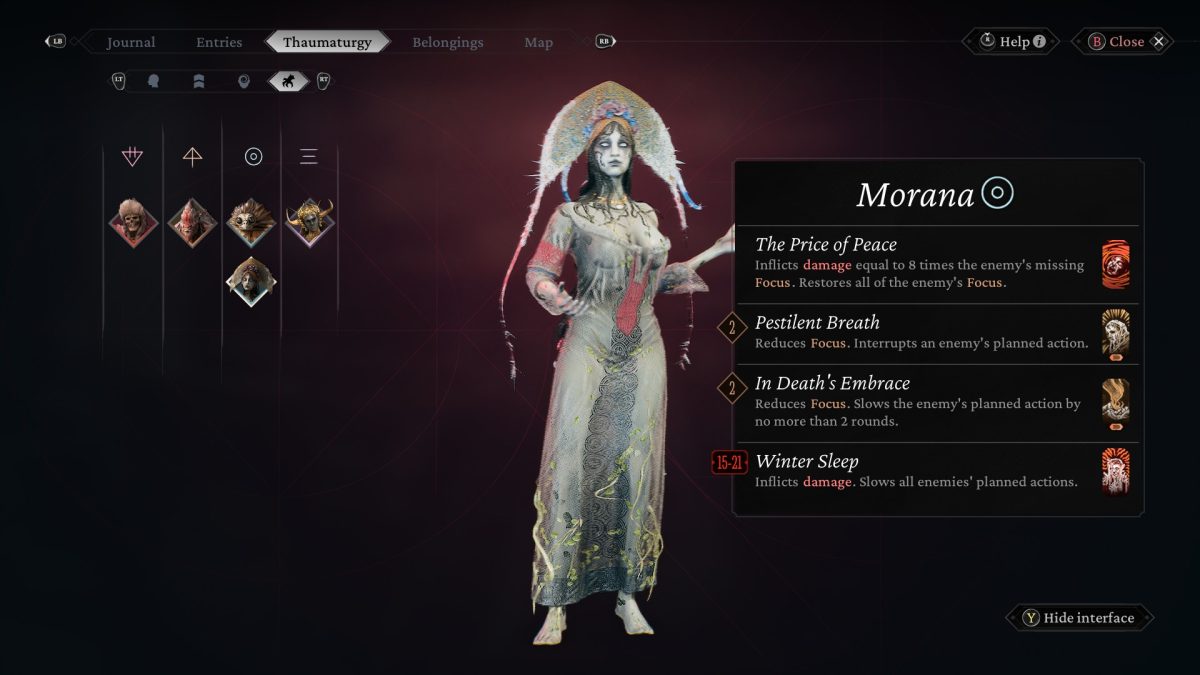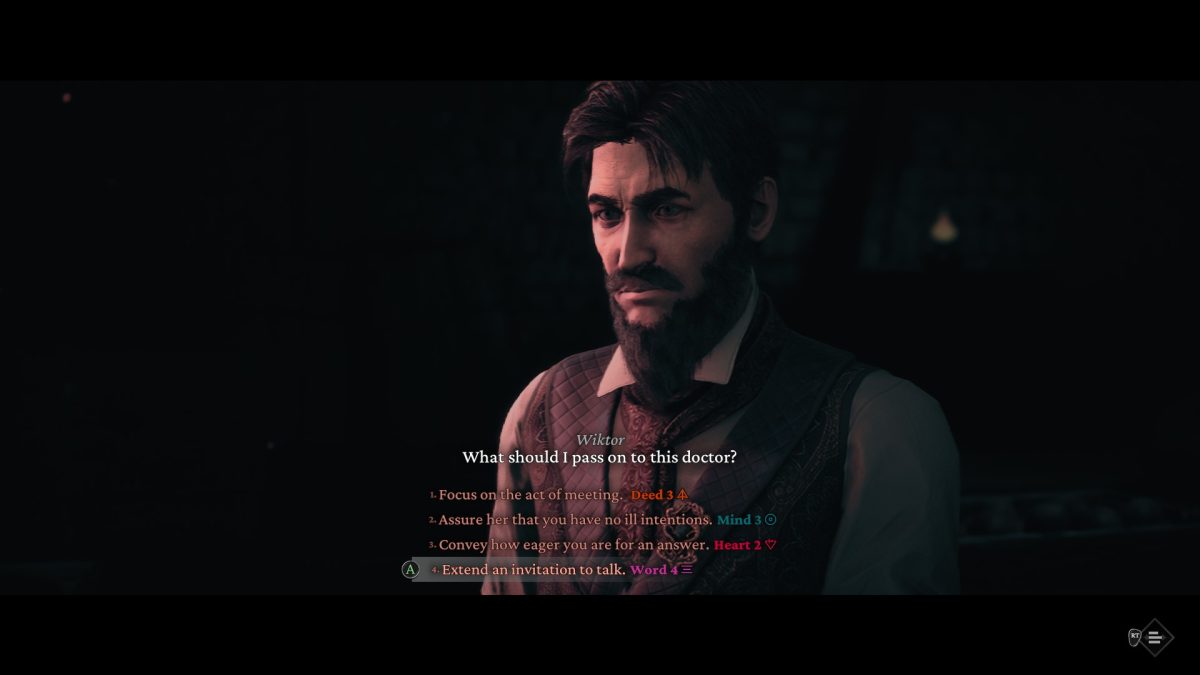I can’t stop thinking about The Thaumaturge. I already had a sizeable interest in the game, but I expected my time to be consumed by other titles coming around this time. However, all I can think about is how interesting The Thaumaturge is, both as a CRPG and as a fictionalized retelling of a very specific and particular historical period. The story-heavy adventure RPG takes the tricky approach of setting the game’s events in real-world Poland during the early 20th century, mixing it with plenty of Slavic folklore and its own magical fiction. However, Developer Fool’s Theory is aware that the setting might not be familiar to most and eases the player into learning about the particularities of the period by engaging with the game’s simple and effective systems
Despite its roots in esoteric magic and early 20th-century mysticism, at its heart, The Thaumaturge is a period drama. The events of the game are set in 1905 Warsaw during the Russian Partition, and just before the First Russian Revolution and the Revolution in the Kingdom of Poland. The game’s Protagonist, Wiktor Szulski, is a young thaumaturge searching for miracle man Grigori Rasputin to heal his connection with Salutor Upyr, the mythical being tied to Wiktor that allows him to execute his magical arts.
During his search, Wiktor receives a letter from his sister Ligia recounting the tragic passing of their father, Stanisław Szulski. Returning to Warsaw for the first time in 15 years, Wiktor sees himself involved in the complicated political and cultural landscape of turn of the century Poland, and in the search for his father’s only legacy to him, his Black Grimoire. Wiktor’s lack of familiarity with the city serves as a way to introduce the player to the setting while helping the character reconnect and remember his past (both in and out of Warsaw,) grounding him in his new reality.

1905 Warsaw is a fascinating and refreshing period to set the game in, and the developers’ familiarity and research of their own history is evident. The plot is removed enough from the actual events of the two World Wars that it allows room to breathe and not indulge in the misery of the period while still letting players recognize the familiar elements that will soon lead to that bloody historical period. At the same time, Wiktor is a unique character in the way he belongs to both the privileged bourgeoisie and a growingly distrusted community of secretive magic practitioners.
This allows him to mingle with both members of Russian high society and various of the marginalized groups living in Warsaw. Wiktor himself having a Russian mother and a Polish father is a point of contention in his many relationships. His particular position puts him close to neither high society nor the commonfolk, and Wiktor is constantly faced with choosing to either prove himself to the imperialist forces as a true loyalist or to make a concerted effort to show solidarity to working-class folks, revolutionary socialists, and the members of the Jewish and Romani community he interacts with.
Another important theme and mechanic in The Thaumaturge is that of human Flaw. As a thaumaturge, Wiktor can detect the temperament and feelings that people leave behind in the world and detect Flaws that Salutors (otherworldly tricksters, spirits, and beings) cling to. Thaumaturges are capable of detecting and stirring emotions in the dimensions of Heart, Mind, Deed, and Word, manipulating people’s emotions through their Flaws and absorbing them in order to grow their own connections with Salutors of their respective dimensions.

This turns the game into a detective and sleuthing game of sorts, where Wiktor can solve conflict by reading the intention and feelings behind character’s acts in the past. While Wiktor starts with single salutor Upyr, he soon grows a cavalcade of peculiar beings deep rooted into Slavic folklore, as well as myths from other parts of the world. In gameplay, these translate into stats that unlock new dialogue choices and actions, such as tricking characters into doing Wiktor’s bidding, distracting them from their mission, or provoking them into combat.
On the topic of combat, fighting in The Thaumaturge is intuitive and entertaining. It vaguely reminded me of Darkest Dungeon. Combat is turn-based, and it involves Wiktor and one of his Salutors (acting as a party member) fighting against groups of 2 to 4 people at a time. While this might seem like a disadvantage, Salutors are extremely powerful and can be swapped at any time, although they require specific setups and strategies to show their full potential. Each round, the player has the choice to damage HP directly with quick or powerful slow attacks, inflict damage-over-time status effects that quickly snowball, or break an enemy’s Focus to deliver a devastating strong attack.
Salutors get even more flashy and specific actions that can also heal Wiktor or disrupt enemy actions. Action variety is seemingly limited, but it works well and has more depth than it seems. Thwarting enemy turns before they have the chance to act is particularly satisfying. At the beginning, fights don’t happen often enough that they become boring, and can feel like an event during main missions. However, the lack of variety in the long run and the inability to speed up actions can make them a bit tedious. Leveling up each Dimension will unlock new actions for Wiktor and grant different skills to power them up.

Combos like inflicting the Suffering DoT status, and gnawing at an enemy’s Focus are very effective early in the game, whereas later on I trivialized every encounter by quickly depleting a single character’s Focus, dealing massive damage to any other enemy in battle with Salutor Krampus, and finishing the remaining enemy with Morana. Acquiring new Salutors is very exciting, as they open new possibilities in both exploration and combat. While I generally enjoyed combat, it is easy to feel like some Salutors are outclassed by others very quickly, making them very situational. Additionally, fights against Salutors are always exciting, but regular human enemies can feel a bit repetitive down the line. I would have appreciated some level of variety in enemy types and actions.
The world of The Thaumaturge is a gift that keeps on giving. From the areas of Powiśle and Port Praga bathed by the Vistula River to the urban district of Śródmieście, every district in Warsaw is its own diorama, full of meticulous detail and attention. The interiors of each locale are nothing to scoff at either, with the Szulski Family House and the Imperial Hotel having some incredible architecture and stunning decor. As I got further into the game, I started to miss the visual variety that the rural areas of Georgia offered during the prologue, but I understood the concession. The soundtrack of the game is as equally wonderful as its visuals, making a very unique sounding game, inspired by the sounds of the multiple cultures meeting in Warsaw. Exploring Warsaw also offers benefits from a gameplay and narrative perspective. The game expects you to check out and discover all the little collectibles that are around the city.
These not only help giving a sizeable boost to experience, but also gives essential context into the setting. Developer Fool’s Theory is aware that depicting this time period comes with its own set of problems, as the concept of Orientalism was not something explored at the time, and deeming foreign things as “exotic” was commonplace. However, the developers were aware of this, and instead of tackling it in an insensitive manner, they decided to address its existence without having Wiktor directly participate. Instead, Wiktor witnesses these elements outside of the plot as supporting text coloring the depiction of the era. These include people enjoying “exotic” fruits like oranges, beverages like soda or coffee that are coming from “the West,” trendy silk fabrics, colonial stores resting at every corner, and dances and performances from other cultures, as well as other cultural activities and elements native to 1905 Warsaw.

In the same vein, the treatment of historically marginalized groups in Europe at the turn of the century is not ignored, but I think it was tackled with care. The game doesn’t shy away from including some of the harsher elements of bigotry and growing ultranationalism during the early 20th century and includes characters with regressive and fascistic ideas as clear-cut villains. However, they are never depicted directly executing heinous acts on screen, and instead lets the player fill in the gaps for these darker expressions of cruelty and prejudice.
I found this execution to be an effective and powerful way of alluding to the historical and material reality of the times without using the victims of this type of violence as punching bags or relying on shock value to make a point. I also feel like it’s important to point out that I do not belong to any of the cultures or groups depicted in the game, so my views are more limited than those of someone with firsthand lived experiences belonging to these identities.
I suspect I’m going to continue thinking about The Thaumaturge for a long time. The game is easy to pick up and very difficult to put down. While it might look like a very specific CRPG for a very specific type of audience, I feel like the way it combines its setting, storytelling, and mechanics makes for an extremely compelling game and a strong contender for those looking to get into CRPGs.
The Thaumaturge is now available for the Windows PC, and it will come to the PS5 and Xbox Series X in 2024.
The Thaumaturge is a story-driven RPG with morally ambiguous choices, taking place in the culturally diverse world of early 20th century Warsaw. In this world, salutors exist: esoteric beings that only thaumaturges can truly perceive and use for their needs. PC version reviewed. Review copy provided by company for testing purposes.
The Thaumaturge is a story-driven RPG that combines real history and Slavic folklore to deliver a captivating period drama.
- Be mindful of timed Side Quests, as progressing too far into the story can make them inaccessible, locking out some Salutors.
- As mentioned above, Morana and Krampus are incredibly powerful. While you can meet Morana early on, you can only acquire her later on.

